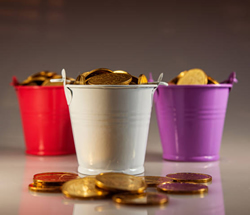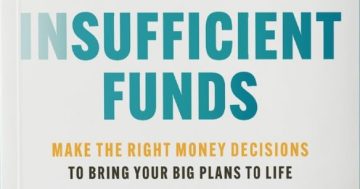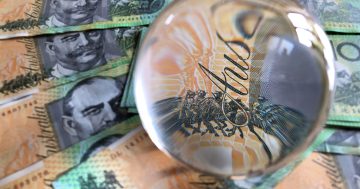Pema Bakshi* discusses how many ‘savings buckets’ we really need.
 At the beginning of a new year, along with promises of gym memberships and smaller to-do lists, comes the compulsion to set financial goals.
At the beginning of a new year, along with promises of gym memberships and smaller to-do lists, comes the compulsion to set financial goals.
After all, no matter how you spent lockdown, chances are you’re a bit more stressed about money.
As many financially savvy folks will attest, the first step to saving is always keeping track of your spending.
One easy way to manage that is by ‘bucketing’ your savings into separate savings accounts.
A method made popular by The Barefoot Investor, the bucketing technique simply involves opening multiple savings accounts for different needs and allocating a portion of funds into each, depending on its purpose.
While opening up even more accounts may sound like an extra headache, the idea behind the method is that you divvy up your funds before you get the chance to spend them.
Maybe you’re consistently underestimating bills or spending more on eating out than you’re putting towards your upcoming holiday.
No matter your situation, being able to where your money is going, and only having debit cards for specific spending accounts, can go a long way in helping you save.
Plus, balancing the accounts can be super satisfying.
But what are the best ways to split your savings? Ahead, we break down the most important ‘buckets’ to consider opening up in 2022.
If you’re not sure of how to apportion funds to each ‘bucket’, it might be a good idea to familiarise yourself with the 50/30/20 rule, where you spend no more than 50 per cent of what you earn, spend 30 per cent and save 20 per cent.
Bills
This one’s fairly obvious but it’s meant for strictly unavoidable expenses.
That means things like rent, basic groceries, housing and phone bills, health insurance, pet insurance or any medications.
Ideally this process should be automated so that you can rest easy and not have to think about how you’re going to come up with rent money at the end of the month.
And, as vital as they are to your life, Netflix and Amazon Prime don’t fall into this category.
Long-term savings
If you’re looking to purchase a car, invest in property or simply reach a pretty, round number in your savings to set yourself up for your future, it’s always worth having a long-term savings account that you don’t touch.
In fact, you may have a portion of your paycheque automatically transferred to this account so that you don’t even think about it.
The best way to ensure that the savings actually stick is to really try to think about this money as not being yours, but as funds that belong to Future You.
It might even be worth creating this account with another bank — one with higher interest rates so that the money is growing.
Short-term savings
Also described as a ‘sinking fund’, this one is for larger holidays, or necessary big-ticket items like furniture or a new laptop.
Basically, anything you’re looking to save up for and spend quite a bit of dough on within the next couple of years.
Ideally, this should also be in a high-yield savings account so that you’re earning interest on your funds.
Values fund
This one is dependent on, you guessed it, your values.
For those who know that dining out, purchasing new clothes, plants or video games is important to your life, don’t just tell yourself to stop spending.
If you can afford it, spend money on what brings you joy, but just make sure to factor this spending into your budgeting so that you can see if you’re overspending in this area.
One way to keep this account in check is to allocate three core values.
For example, this could include dining out, clothes and travel.
From there you just make sure your propensity for weekends away or trying out swanky new restaurants isn’t financially (or mentally) allocated into your everyday or essential spending.
Emergency
Having an emergency fund can be a lifesaver, and is great to have for peace of mind.
This could include unanticipated car repairs, vet bills, fees, etc, and means that the rest of your savings don’t suffer when life throws you a curveball.
Now, it may seem silly to save for rainy days during a pandemic, but trust us, life is unpredictable, and it’s better to put money towards an emergency fund that you may or may not need than to keep taking out credit for unexpected costs.
Everyday spending
Of course, depending on how many of these accounts you open up, the remainder of your money should land into your everyday spending account.
This will most likely be the account attached to your debit card, so you can easily access the funds you buy your coffees, presents, taxis or impulse buys with.
If you want to go one step further with your budgeting, you could even set up a tracker and note down and categorise your everyday spending over weeks or months in order to gain a better sense of where this money is going and whether or not it makes sense to continue spending the way you are.
*Pema Bakshi is style and living editor at Refinery29 Australia.
This article first appeared at refinery29.com











